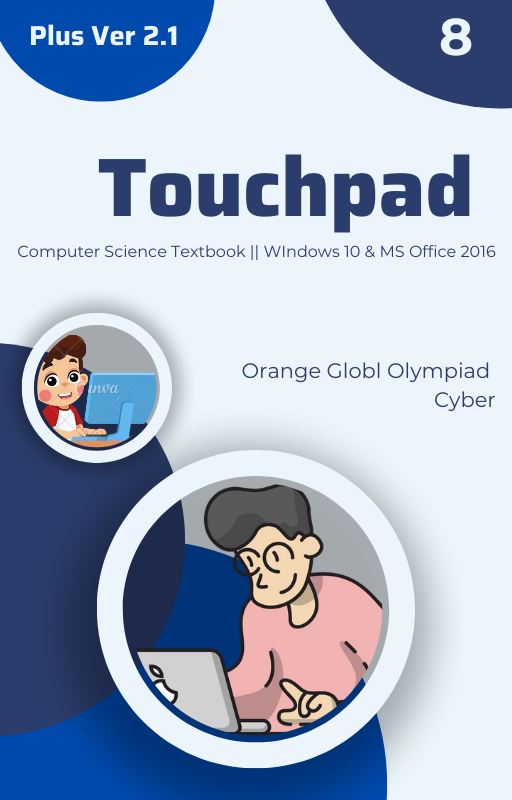(i) Expert system (ii) Natural Language Processing
a. I-Apps are software written for mobile devices based on robotics and machine learning technology.
ans: False
b. Facial recognition software and video surveillance cameras are examples of pattern recognition software.
ans: True
c. 3D Printing was first developed at MIT (Massachusetts Institute of Technology) in the 2005.
ans: False
d. The system where biological materials like cells and growth factors are fused to create tissue-like structures replicating their natural equivalents is called bioprinting.
ans: True
e. Robotic automation creates a new IT structure with complex system integrations.
ans: False
4. Short answer type questions.
a. What is AI?
ans: AI, or Artificial Intelligence, refers to the development of computer systems that can perform tasks that typically require human intelligence. These tasks include learning, reasoning, problem-solving, perception, natural language understanding, and speech recognition. The goal of AI is to create systems that can adapt, improve, and function autonomously.
b. Write a short note on Pattern recognition.
ans: Pattern recognition is the automated identification of patterns within data, integral to artificial intelligence and machine learning. It involves extracting meaningful features from information, creating models, and making predictions. Used extensively in diverse fields, from image and speech recognition to financial forecasting, it enhances systems’ ability to understand and respond to complex data sets.
c. What do you mean by Rapid prototyping?
ans: Rapid prototyping is a quick and iterative process in product development, creating a tangible model or prototype for testing and feedback. It allows for swift design adjustments before full-scale production, reducing time and costs. Common methods include 3D printing and computer-aided design to accelerate innovation and improve final product quality.
d. What is RPA? Explain.
ans: RPA, or Robotic Process Automation, involves the use of software robots or “bots” to automate repetitive and rule-based tasks within business processes. RPA mimics human actions in interacting with digital systems, enhancing efficiency, accuracy, and speed. It’s widely employed in various industries to streamline workflows and reduce manual workloads.
e. What is I-Apps?
ans: “I-Apps” is not a widely recognized term. However, it might refer to “Intelligent Apps” or “Interactive Apps.” Intelligent Apps typically incorporate AI, machine learning, or other advanced technologies for enhanced functionality. Interactive Apps generally engage users with dynamic content or features. The specific context would provide a more accurate interpretation of the term.
5. Long answer type questions.
a. Write short notes on the following:
(i) Expert systems
ans: Expert systems are computer programs designed to emulate the decision-making ability of a human expert in a specific domain. They use knowledge bases, rules, and inference engines to analyze information and provide solutions or recommendations. Expert systems are employed in various fields, from medicine to finance, for problem-solving and decision support.
(ii) Natural language processing
ans: Natural Language Processing (NLP) is a branch of artificial intelligence focused on enabling computers to understand, interpret, and generate human language. NLP involves language comprehension, sentiment analysis, and language generation, facilitating communication between machines and humans. It’s used in applications like virtual assistants, chatbots, and language translation services.
(iii) Intelligent agents
(v) VR
b. List the applications of AR and VR.
(v) VR
ans: Virtual Reality (VR) immerses users in a computer-generated environment, simulating a three-dimensional experience. Utilizing VR headsets or goggles, users can interact with and navigate through this synthetic world. VR is widely used in gaming, training simulations, education, and therapeutic applications, providing an immersive and often interactive experience.
b. List the applications of AR and VR
ans: AR applications include gaming, navigation, education (e.g., interactive textbooks), and retail (virtual try-ons). VR finds use in gaming, training simulations (e.g., flight or medical simulations), education (virtual field trips), healthcare (therapy and pain management), and architecture (virtual walkthroughs). Both technologies have growing applications in design, marketing, and collaborative work environments.
c. Explain Internet of Things with suitable examples.
ans: The Internet of Things (IoT) refers to a network of interconnected devices that communicate and share data to perform tasks. Examples include smart home devices like thermostats and security cameras, wearable fitness trackers, and industrial sensors monitoring equipment. IoT enhances efficiency and enables automation by connecting various physical objects to the internet.
d. Write the applications of 3D Printing.
ans: 3D printing applications include prototyping for product development, custom manufacturing of medical implants and prosthetics, creating intricate and personalized designs in industries like fashion and jewelry, producing architectural models, aerospace component fabrication, and even food printing for culinary purposes. It offers versatile and efficient manufacturing solutions across various sectors.
ans: Augmented Reality (AR) overlays digital information on the real world, enhancing the user’s environment. Virtual Reality (VR) immerses users in a simulated environment, detached from the real world. AR enhances reality, while VR creates a wholly immersive experience. Both technologies find applications in gaming, education, and industry.
Latest Technological Development
Click Here for Touchpad Computer Book Class 8 Ch 1 Solution
Click Here for Touchpad Computer Book Class 8 Ch 2 Solution

